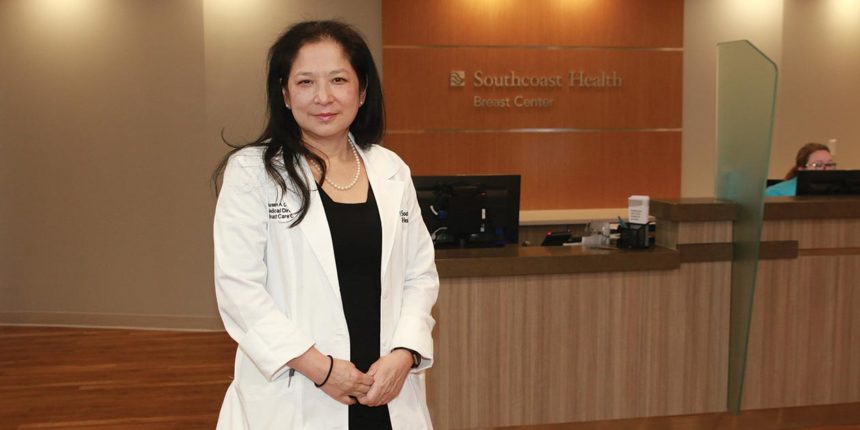Health+
Better Technology, Better Breast Health

Southcoast Health Breast Center uses advanced technology to take a comprehensive approach at breast care
No two women are exactly alike, and depending on family history, diet and exercise, and other factors, what each woman needs for her overall breast health will be different.
Because of this, there are many reasons a patient might visit the Southcoast Health Breast Center, from screening for breast cancer or biopsy to discussing breast pain or other concerns. Many times, what physicians discover are treatable conditions or abnormalities, not breast cancer — an important point that Dr. Maureen Chung, Medical Director of the Southcoast Health Breast Program, wants patients to keep in mind.
“What women should realize is that most things we see in the Southcoast Health Breast Center — and most abnormal mammograms — are not cancer,” she says. “We see a lot of benign breast disease. What we do is figure out what’s causing the abnormality. It doesn’t have to be bad.”
Advanced Imaging
Thanks to advanced technology being used in the Southcoast Health Breast Center, breast cancer is being caught earlier and treated more effectively.
Tomosynthesis, also known as 3-D mammography, is now the preferred method of mammography across the Southcoast Health system.
Unlike standard 2-D mammography, tomosynthesis produces 3-D images that enable radiologists to identify tumors at their earliest stages, when they are most successfully treated. Tomosynthesis also makes it easier to identify benign abnormalities, reducing follow-up visits for patients.
Treatment Technology
When a patient is diagnosed with breast cancer, another advanced technology available at Southcoast is wire-free localization for breast surgery.
In wire localization, a wire is inserted into the breast to mark the location of the tumor for surgeons. Because the end of the wire sticks out from the breast, it has to be placed on the morning of surgery, and patients have to be careful not to displace it.
With wire-free technology, a reflector is placed inside the breast instead of a wire. As small as a grain of rice, the reflector can be placed up to 30 days before surgery. It remains inactive until the time of surgery, when it emits non-radioactive waves that surgeons can use to locate and remove cancerous tissue. The Southcoast Health Breast Program is the only program in the immediate area that is routinely using wire-free technology.
“For the patient, it is a lot more comfortable to have the reflector placed than a wire,” Dr. Chung says. “For the hospital, it’s better because we can now schedule our surgeries first thing in the morning; we’re not tied to when the wire was placed. From a surgical perspective, we find that the reflector allows us to take out less tissue, because it gives us more flexibility in terms of where we can make the incision.”
Whether you’re visiting for surgery or wellness, the Southcoast Health Breast Center has you covered.
The Southcoast Health Breast Center has locations in Dartmouth and Fall River. Both locations offer 3-D mammography, wire-free localization and an integrated approach to care.
